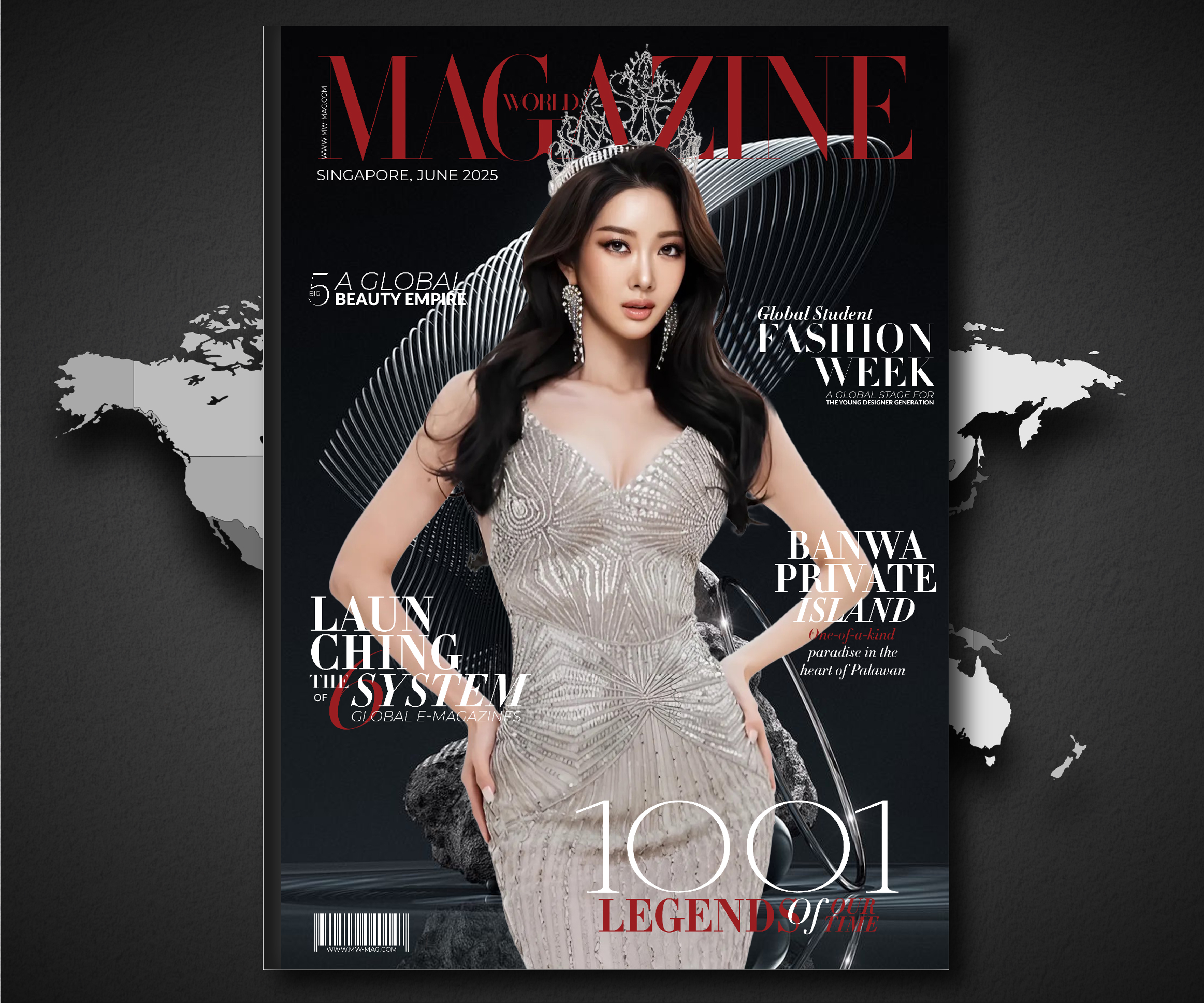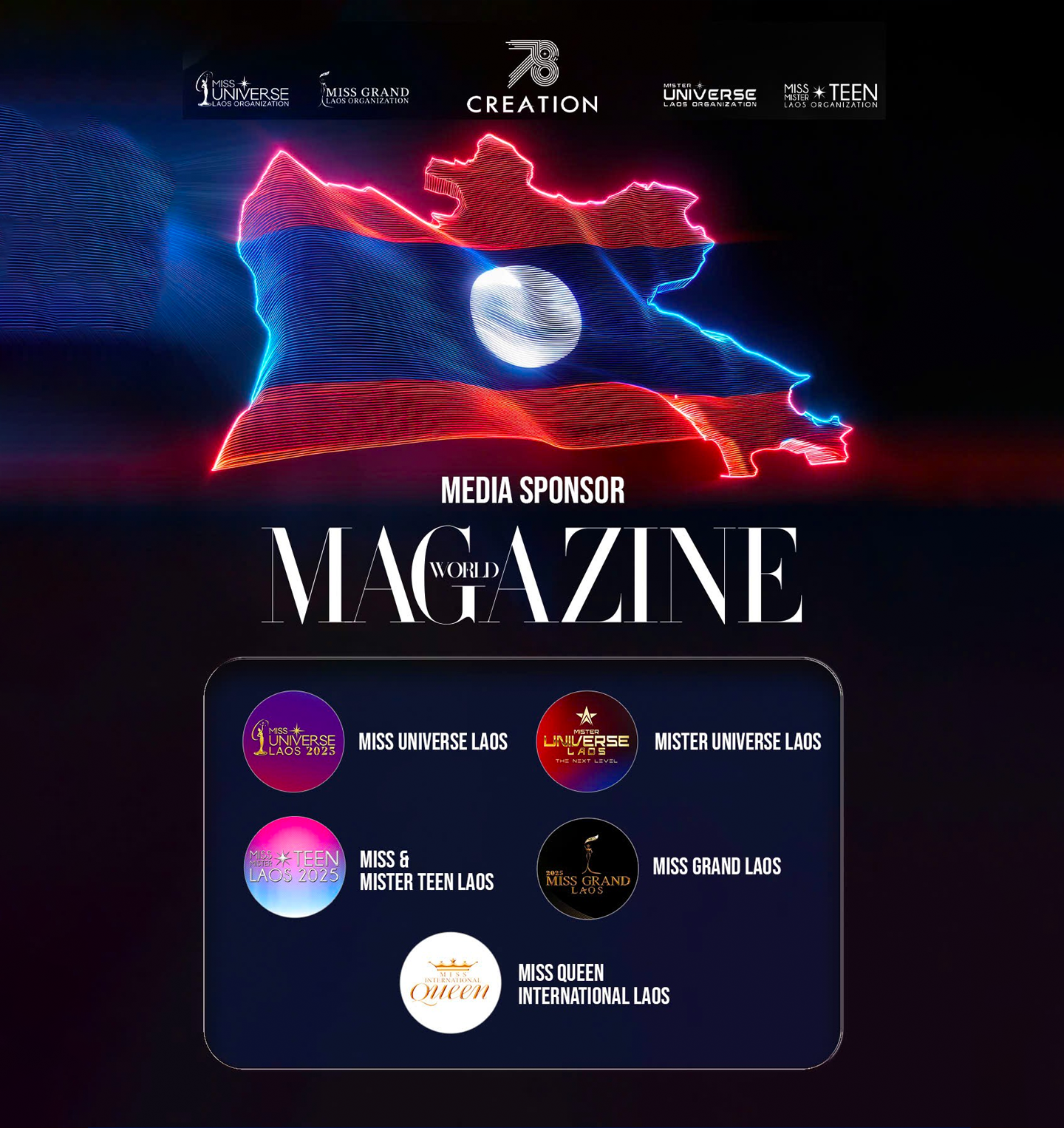Can a simple play of proportions reset how we think about fashion? Celine’s latest collection proves it can. Under Michael Rider’s vision, the juxtaposition of big pants with little shirts—or vice versa—does more than surprise the eye. It challenges our ingrained assumptions about balance, body, and beauty. This is more than a trend. It’s a flexible formula for modern dressing that adapts to every form, mood, and individual.
Revisiting a timeless silhouette
Michael Rider’s inaugural collection for Celine channels a dialogue with recent fashion history. There are echoes of Phoebe Philo’s minimalist brilliance and Hedi Slimane’s midnight sleek rock energy. Yet Rider doesn’t replicate—he translates. He redefines simplicity through tension: volume meets slimness, structure meets fluidity.
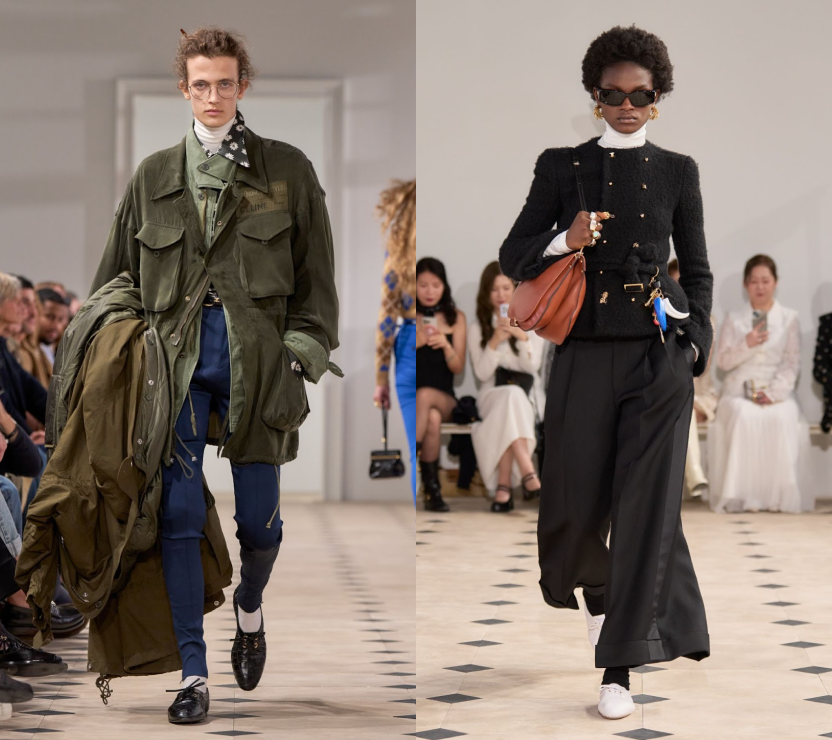
On the runway, oversized military-inspired bombers and sharply tailored blazers are layered over cropped cigarette pants. Inverse pairings feature voluminous puff-sleeve blouses balanced by super-slim trousers. The effect is subtly revolutionary—quietly shifting our gaze from monotony to curiosity, encouraging us to rethink fit and scale.
This yin-yang interplay speaks to a fashion moment longing for simplicity grounded in contrast. After years of maximalist excess and micro-trend turbulence, Celine’s new code feels like a collective sigh of relief—calculated, considered, and cool.
Power dressing reimagined
The “big top, little bottom” formula isn’t a novelty—it’s deeply rooted in sartorial history. Think Audrey Hepburn’s iconic pairing of trench coat and cigarette pants in Funny Face, Princess Diana’s mix of wide-shouldered blazers with slim jeans, or early Calvin Klein suits with form-fitting leather trousers. These looks weren’t flashy—they whispered authority, elegance, and ease.
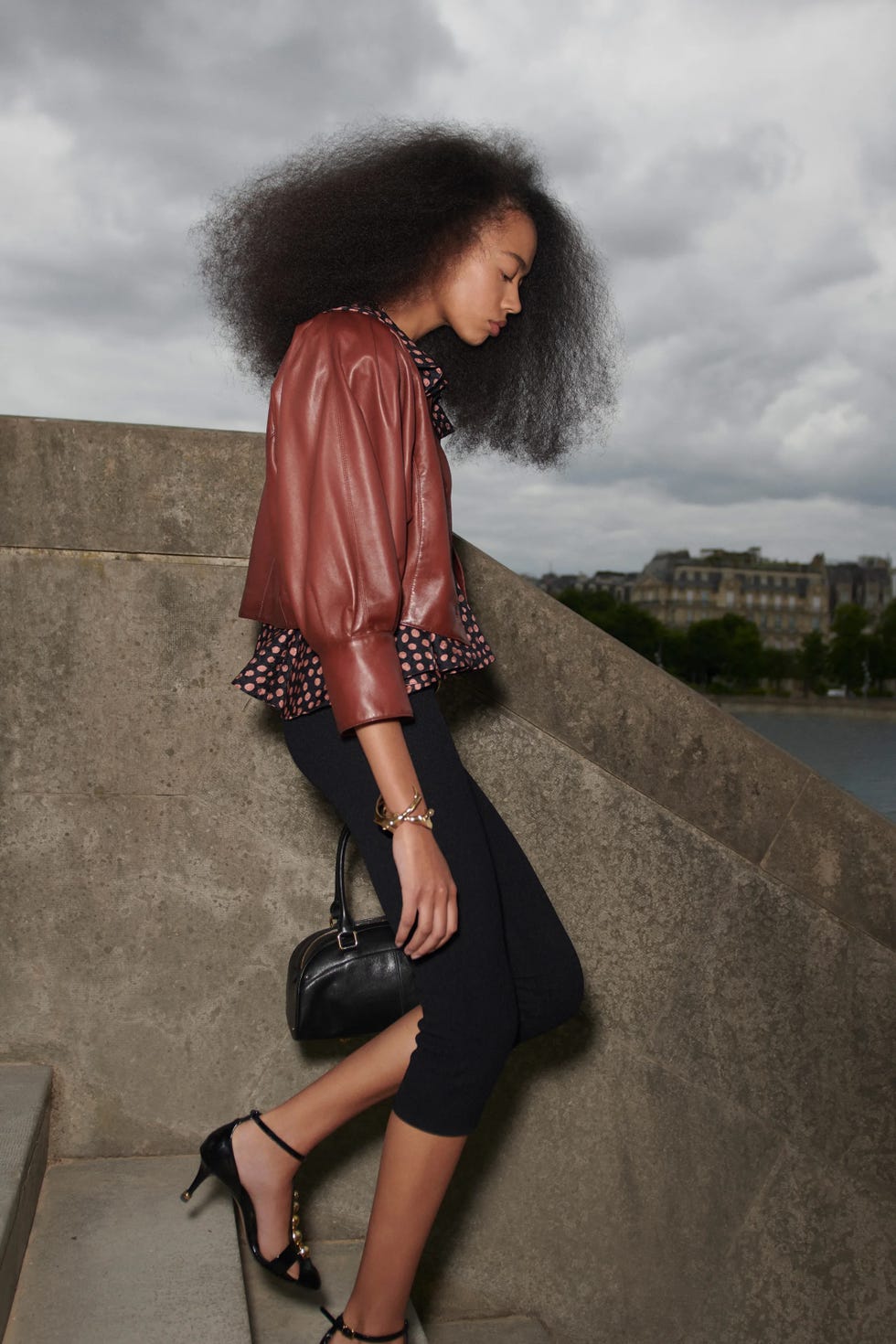
Rider taps into this lineage, but with a twist. His blazers aren’t structured armor—they’re sculptural statements. His cropped pants are not bare essentials—they’re precision cuts that anchor the look. It’s a visual metaphor: confidence isn’t loud. It’s proportioned.
By pairing volume with precision, Rider proves power dressing no longer needs shoulder pads or bravado. It’s about presence, posture, and poise. The look isn’t built to dominate—it’s made to resonate.
A versatile blueprint for everyday elegance
What makes Celine’s new silhouette so enchanting is its versatility. In polished wool suiting, it reads executive. In sheer organza, it becomes ethereal. And when translated into unisex or menswear, it carries equal weight—oversized trench coat, slim cropped pants, pared-back leather sandals—the formula remains compelling.
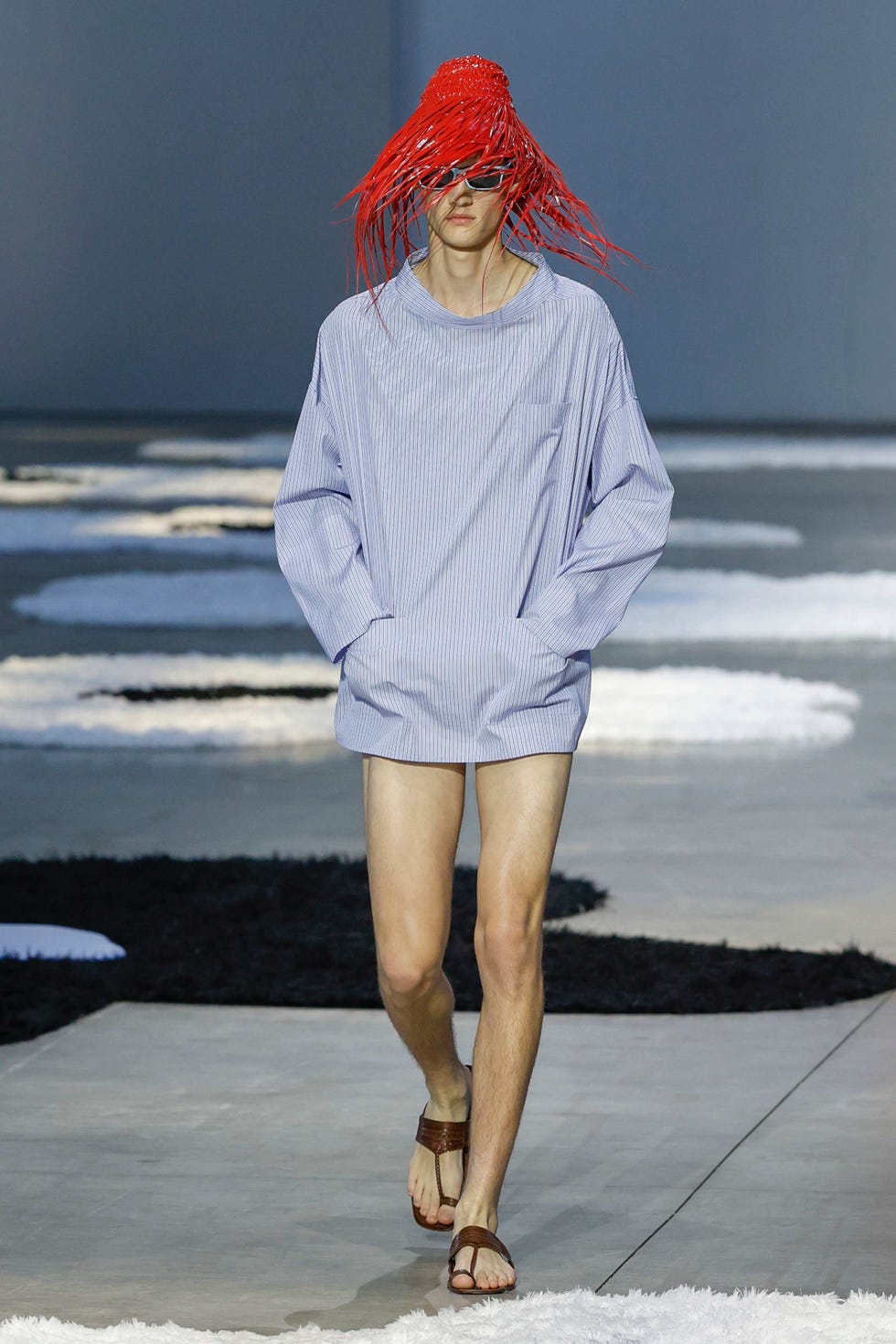
The style also unlocks emotional nuance. Feeling assertive? Choose a sharp, asymmetrical blazer with skinny trousers. Want relaxed elegance? Opt for a softly tailored bomber with high-rise capris. Rider’s design is not a prescription—it’s a toolkit, offering compositional freedom instead of fashion formula.
This blueprint champions individual expression. With structure as foundation and choice as power, Celine gives its wearer agency—empowering them to define their own proportions, clothes that feel as much about mood as material.
Personal style overrides trend cycles
Rider never forces uniformity. He embraces the fact that not every silhouette flatters every body or every temperament. Instead, he hands over the reins of harmony and scale, letting individuals decide which element—big or small—wins the day.
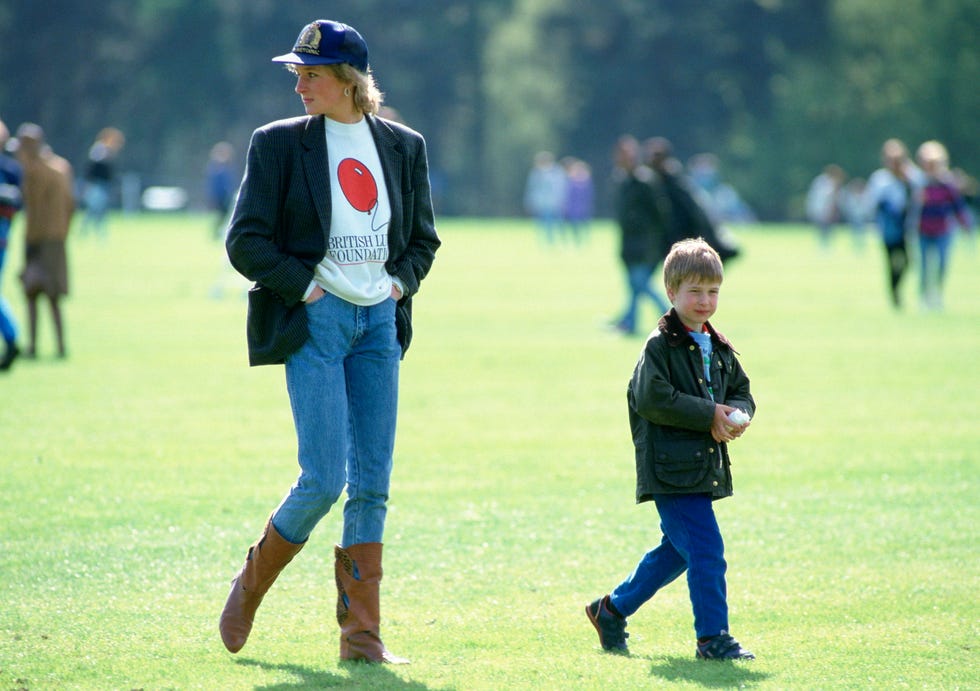
In doing so, Celine’s formula becomes anti-trend. It’s not about novelty or hype—it’s about archetype. A well-cut oversized coat over skinny denim; a cropped bomber and cigarette trousers. These combinations transcend seasons. They acknowledge that style is cyclical—and personal.
This is radical not because it’s flamboyant, but because it’s forgiving. It adapts. It respects shape and story. It says: define your proportions, mood by mood, body by body.
When simplicity sparks innovation

Celine’s “big pants, little shirt” moment is deceptively simple. But simplicity can be subversive. In Rider’s hands, it becomes a canvas—a place where structure meets fluidity, where personality matters more than prediction, where confidence is shown in balance not bombast.
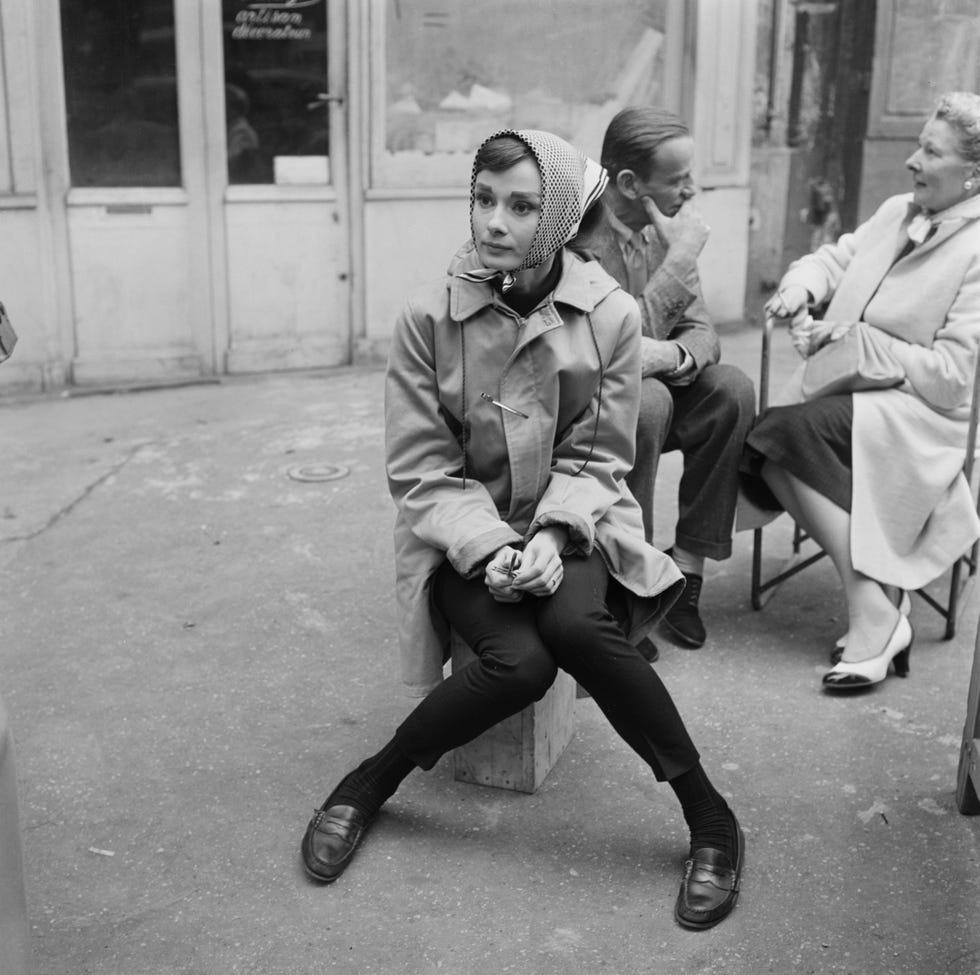
In an industry chasing headlines and hashtag glory, this is disarming. There’s no need for spectacle. Just thoughtful cuts, gentle dissonance, and room to breathe.
The collection offers more than clothing. It offers a strategy: a fashion philosophy rooted in human proportion, emotional resonance, and quiet revolution. And in complexity’s shadow, that might be the boldest statement of all.


